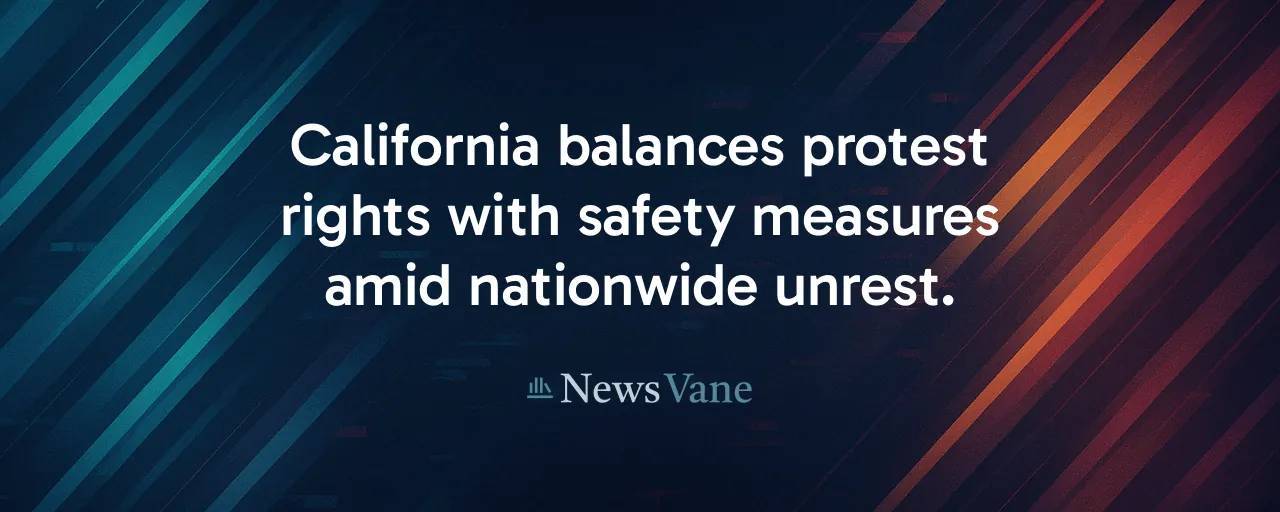Preparing for a Charged Weekend
California is on high alert. With nationwide protests expected, Governor Gavin Newsom announced on June 13, 2025, a plan to deploy safety and security resources across the state. The goal is clear: support local law enforcement, protect public safety, and uphold the right to peaceful protest. This delicate task comes at a time when tensions over free speech and public order are running high.
The protests, known as 'No Kings' rallies, stem from recent federal immigration raids in Los Angeles. They've already sparked intense reactions, with thousands expected to take to the streets. By mobilizing nearly 700 California Highway Patrol officers and coordinating with local governments, the state aims to stay ahead of potential unrest. The question is whether this preparation can foster calm without stifling voices.
A Framework for Safety and Rights
The state's strategy centers on readiness. All eight California Highway Patrol Special Response Teams are active, positioned strategically across regions. The Southern Division is on tactical alert, with every officer prepared to act if needed. The Governor's Office of Emergency Services is also in play, lining up resources like barricades and medical support, though local governments haven't yet requested significant aid.
Governor Newsom stressed the value of peaceful protest, describing the "office of citizen" as the nation's most vital role. He affirmed the state's commitment to First Amendment rights while drawing a firm line against vandalism or violence. This balance, encouraging free expression while enforcing laws, guides California's approach.
Commissioner Sean Duryee of the California Highway Patrol reinforced this stance. His officers are trained to support lawful assemblies and respond decisively to any attempts to disrupt public safety or damage property. The focus is on protecting everyone's rights, whether they're marching or simply passing by.
Navigating a National Divide
California's efforts are part of a larger, contentious landscape. In Los Angeles, recent protests over immigration raids led to over 400 arrests after minor incidents like rock-throwing triggered curfews and federal action. Federal agents used pepper spray and less-lethal rounds when crowds blocked highways, moves defended as necessary but criticized for escalating tensions.
Some national leaders, including President Trump, advocate for strong law enforcement to protect businesses and infrastructure. The deployment of 4,000 National Guard members and 700 Marines to Los Angeles, despite Governor Newsom's objections, reflects this priority. Supporters argue that such measures deter chaos. Civil-liberties groups also express concerns that heavy-handed tactics can suppress free speech and disproportionately affect marginalized communities.
History offers perspective. California has managed major unrest before, from the 1965 Watts protests to the 2020 racial-justice marches. Over time, policing has shifted toward de-escalation and communication. This evolution has been challenged by incidents like the 2020 George Floyd protests, which showed how quickly trust can falter when force seems excessive.
Strategies to Prevent Violence
Keeping protests peaceful demands careful planning. Experts advocate for early dialogue with organizers, clear warnings before dispersal, and a restrained police presence. In Los Angeles, the California Highway Patrol has blocked freeway ramps to guide protest routes, while businesses have fortified storefronts and adjusted operations to stay safe. Protest groups are also proactive, using marshals and legal observers to maintain order and record interactions.
Recent Los Angeles protests highlight the challenge. Most gatherings, with 5,000 to 8,000 participants daily, have been peaceful. Yet isolated acts, Molotov cocktails, a burned patrol car, and torched autonomous vehicles, show the risks. Tactics like quick removal of troublemakers and real-time communication can help ensure lawful protests don't spiral out of control.
What Lies Ahead
As the weekend approaches, California's preparations aim to prevent violence while honoring free expression. Success will depend on how officers engage with communities and ensure protesters feel their voices are respected and heard.
The national backdrop adds complexity. With federal troops in Los Angeles and other states mobilizing their own forces, the line between facilitating protest and controlling it is thin. Californians cherish their right to speak out. They also want safety. Balancing these priorities will test the state's resolve and its democratic values.
For now, the state urges protesters to stay peaceful. As events unfold, California's response could shape how future protests are managed, both here and across the nation.
